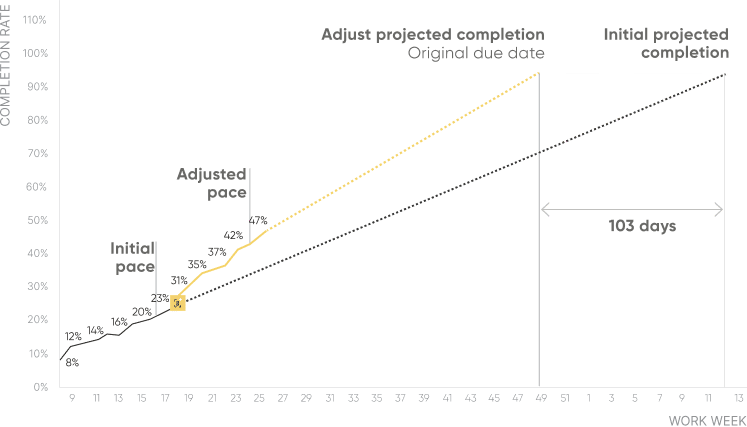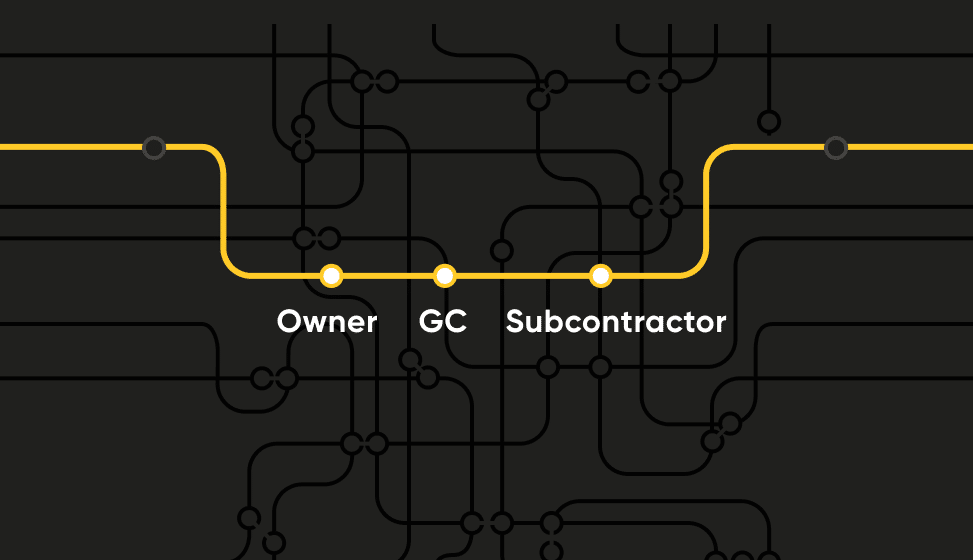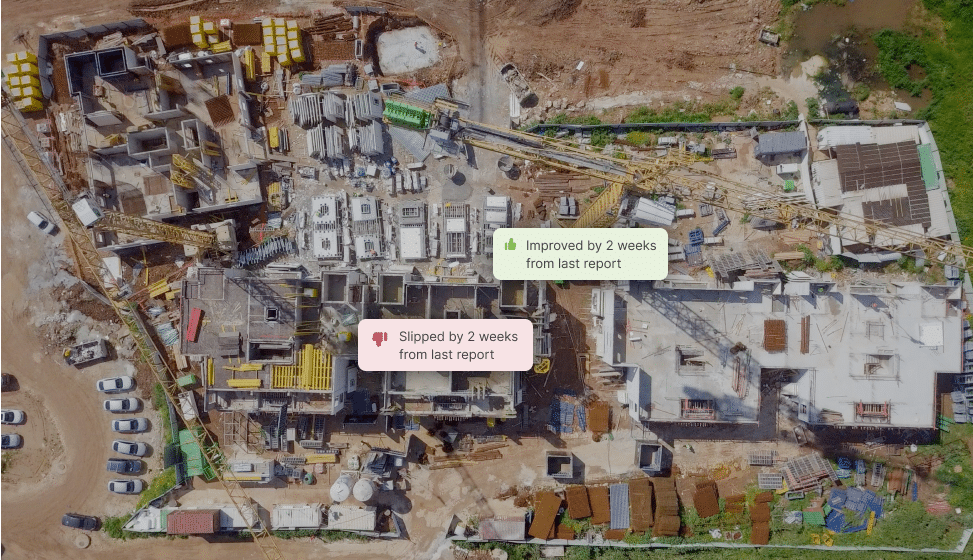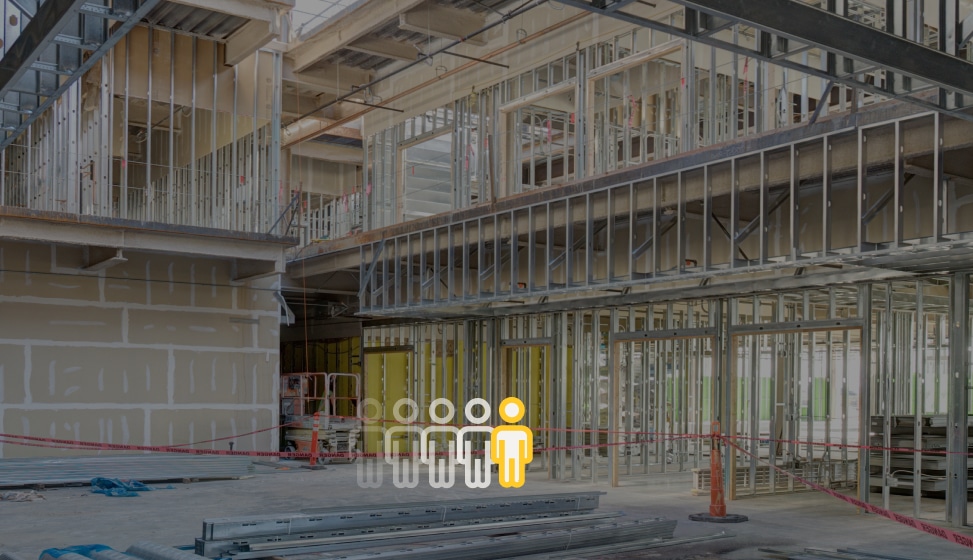The Construction Dilemma When The Unnoticed Becomes Unmanageable

The devil is in the details – a saying that proves particularly true in construction. When managing a construction project, every tiny event can have massive consequences and set off a detrimental chain reaction. However, expecting project managers to identify every small issue is nearly impossible.
Given the scale of construction sites and the multitude of stakeholders involved, project leaders cannot reasonably be expected to oversee and monitor every aspect that may pose a risk in the future. But when those minor hiccups go unnoticed, they begin to accumulate and, before you know it, they are about to trigger a cascade of delays and escalating costs.
But what if we knew about sneaky bumps and hidden bottlenecks ahead of time?
Let's Have A Look At A Case Of One Of Our Clients Last Year.
When constructing a 50,000 SQM residential complex, project managers pinpointed a looming risk with their drywall contractor, who was significantly behind schedule. Due to the nature of residential construction, even a delay from one single trade can result in a domino effect, disrupting the entire workflow and task sequence.
Staying On Track With Timely Interventions
Thanks to diligent progress monitoring and performance assessment with the help of Buildots' data-driven insights, our client caught the issue early on and took steps to preemptively mitigate it. By adjusting pace and timelines, they not only ensured the project stayed on course, but even managed to recover lost time as illustrated in the graph below.

The Essential Strategy Every Superintendent Should Know
Recognizing the significance of these minor yet critical details paves the way for a transformative approach in construction management.
Only when provided with reliable data sourced from the site itself, construction managers are able to make proactive, accurate decisions before minor problems grow into huge catastrophes. This is where technology can play an important role. Innovative advancements have paved the way towards maximally enabling managers to adopt their most proactive stance.
One such strategy is Performance-Driven Construction Management (PDCM). PDCM centers on setting key metrics and equipping teams with data-driven techniques. It ensures actions are not just aligned with where we are, but also with where we’re headed, guaranteeing nothing goes unnoticed, ensuring everything remains manageable and within control.
By embracing technologies like Buildots’ AI progress tracking, construction managers can effectively implement PDCM, address the challenge of overseeing countless project details and preemptively tackle them before they balloon into costly setbacks.
With Buildots’ data at hand, construction managers can, for example, benefit from:
- Single Source of Site Truth: AI-based progress tracking offers you a precise, granular, and up-to-date project status overview in one single source of truth accessible to everyone, everywhere. This approach guarantees that all details, from the tiny to the broad, are accurately addressed and resolved.
- Proactive Risk Management: Precise pace analytics allow managers to assess each trade's progress against milestones. When noticing a slowdown, they can implement early course adjustments – this is not simply about adjusting schedules – one of the most common reactive responses – but rather about measuring and optimizing work plans.
- Early Discrepancy Detection: By integrating precise data and PDCM framework, we significantly enhance our ability to detect risks and deviations at an early stage. It also enables us to strive for continuous optimization, learn from our mistakes, and improve going forward.
Mastering The Seemingly Insignificant Can Make Or Break Your Project
It's about equipping our construction managers with the right information at the right moment to safeguard project timelines. With PDCM, they can dynamically assess and adjust critical operational factors such as work pace, location-based progress, delay risks, and task completion patterns. We're using solid numbers to make smarter plans, work better, and hit our targets – and not let minor hiccups steer us off course.




